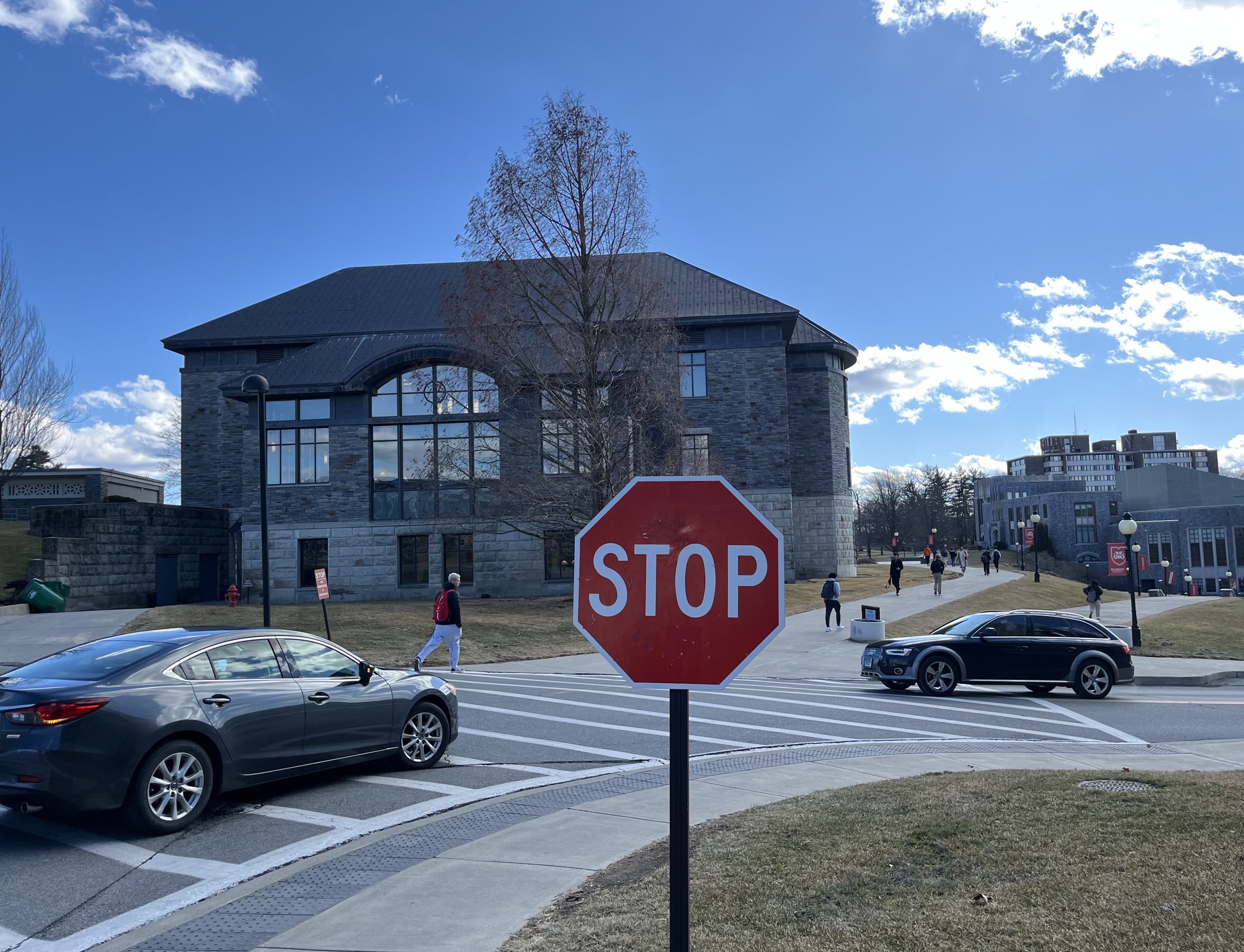Origins of Hip Hop: Black History Month Event
“You are now about to witness the strength of hip-hop knowledge.”
Dr. Steve Peraza, professor of history and social studies at SUNY Buffalo, concluded the celebration of Black History Month at Marist College on Feb. 24 with “The Origins of Hip Hop.” He presented the importance of hip-hop in black culture as well as his own life.
“Hip-hop is critical. It provides a national platform for an art form that is identified with race,” Peraza said. “It’s also impactful as a unifying force within the black community as well as bridging the gap between black communities and other communities of people.”
Marist Circle reporter, Brian Edsall, with Dr. Peraza
Peraza spoke of the transformation of hip-hop throughout different generations, which he defined as the Old School Era (1970-1983), the New School Era (1984-1991), and the Mainstream Era (1992-present). He defined these generations through songs such as Sugar Hill Gang’s Rapper’s Delight, Run-D.M.C.’s King of Rock, N.W.A.’s Straight Outta Compton, Jay-Z’s Hard Knock Life, and Drake’s Hotline Bling.
Peraza also spoke adamantly against the history of violence within hip-hop. He particularly cited the conflicts between the East Coast and the West Coast, which included the deaths of iconic rappers Tupac Shakur and Christopher “The Notorious B.I.G.” Wallace in 1996 and 1997, respectively.
“It became authentic to be tough and to even be violent. Authenticity should not mean that much. It would be better for hip hop if artists could just be artists. The violence isn’t productive for hip-hop or society as a whole,” Peraza shared.
This art form has had a tremendous impact on black culture. Peraza personally confirmed this by attesting to how hip-hop had saved his own life.
“When I was in high school I got into rapping…I believed that a rap career was going to be a viable option for me, so I didn’t care much about my decision to leave school,” Peraza said. “Really soon after, I started to notice that my raps were weakening because I wasn’t in an environment where I was learning, growing my vocabulary, or being challenged to write.”
He laughed when recalling how he returned to school in part because he wanted his raps to improve.
“I wanted to start writing again and be as creative as possible with my raps,” reflected Peraza. “I credit hip-hop for really driving my passion to put words onto paper and be the best writer I could be.”
Peraza emphasized how his story and the lessons he learned are much different than the rhetoric that many rappers use, which is to abandon education for the dream of becoming famous.
“If skills in rap can help you get into school, or help you to communicate effectively in different settings, then I think it’s a really helpful tool,” shared Peraza. “That’s really how I see hip-hop. It’s a skill or a craft that you can develop that’s going to lead you into another context where you can apply some of those skills or talents.”
Danisha Craig, eBoard member of the Black Student Union at Marist, was extremely impressed with the presentation and the knowledge she gained from it.
“Learning about the dynamics of important genres and how they transform through generations has been a subject that I have gained interest in,” said Craig. “There was more participation at this lecture than I’ve seen at Marist in a while. I usually don’t talk at lectures, but the speaker’s questions for the audience were so open that I decided to voice my opinion.”
Individuals of all age groups were in attendance. This added perspectives from different age groups in a presentation which covered generational shifts in hip-hop, leading to some friendly debate between older faculty members and younger students.
When asked about who the best rapper alive was, Peraza had a definitive answer. “Eminem. He has mastered the skill of rapping. I haven’t heard any other rappers that have been able to match his skill level,” Peraza stated.











